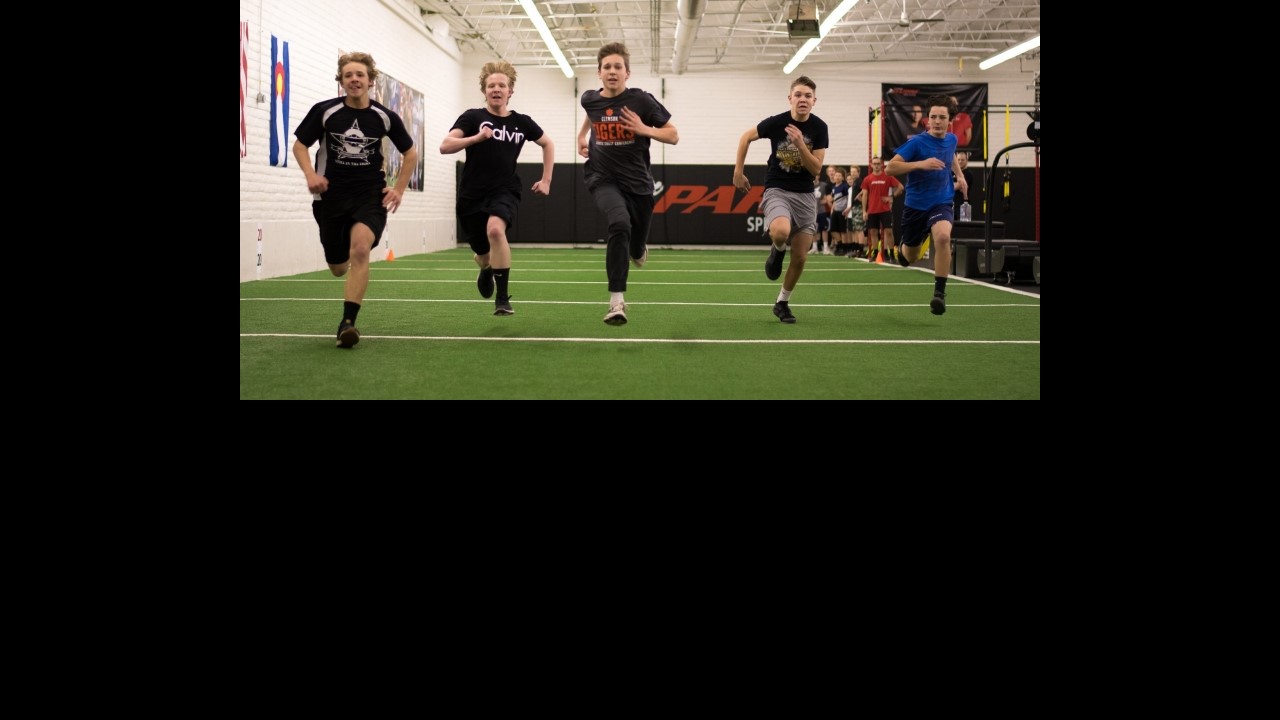A High School Model for Strength Training Certification

Performance training in Canadian high schools is very limited in scope and varies tremendously between, and within, school districts in both public and private settings. Access to decently equipped weight rooms is often a major barrier and there is no standard for delivery of strength training education in these settings. Resources to hire individuals who specialize in the training of athletes are rare, thus the onus falls upon the high school teacher to deliver this type of service, often with minimal background in this area. In order to increase access to effective performance training services, some schools are looking at partnerships with the private sector.
St. James High School in Guelph, ON created a sports-centric program aimed at recruiting athletes from the region into a learning stream that focused on leadership through sport and performance excellence. The Leaders in Exercise and Athletics Program (LEAP) they created includes progressive curriculum over four years of high school that provides the tools necessary for athletes to take responsibility for their own performance, and eventually lead others in their athletics journey.
The program has a strong emphasis on character development, the development of leadership skills, athletic performance, and educational and career pathways for the students. As part of its mandate, it utilizes partnerships in the community to provide students with opportunities to learn and lead in diverse settings. Students obtain enhanced certifications, help run community events, intern with a variety of businesses, and get access to a variety of predominant guest speakers.
To aid in the delivery of the performance training aspect of this program, St James partnered with LIFT Fitness and Performance, a private performance training facility in Guelph. LIFT had the facilities, equipment and coaching expertise necessary to train large numbers of athletes at the same time and was located close to the school. Students in the LEAP program trained at LIFT two days each week, with some funding coming from the school board and others through a user pay system.
The LEAP program has a mandate to provide enhanced certifications to their students in their junior and senior years. As LIFT had a preexisting coach education program, they asked if it could be modified to provide some coach education skills to the students. From this came a novel credential labelled as “Safe LIFT Certified”.
The Safe LIFT Certified program is a 10-hour instructional framework for teaching basic principles of strength training to a high school student. The goal of the program is to develop students that can safely and effectively train in a weightroom environment and perhaps even guide friends in their training. The learning modules included in the program are as follows:
- Weightroom Etiquette
- Equipment Safety, Storage and Spotting
- Safe and effective squatting technique
- Safe and effective deadlifting technique
- Safe and effective overhead pressing technique
- Safe and effective horizontal pressing technique
- Safe and effective pulling technique
- Safe and effective core technique.
- Safe and effective training plans
Each learning module included a deliverable where the student had to demonstrate their ability to lift safely, and there was a final practical competency exam at the program’s completion that insured the student was safe and effective in their training.
The model of delivery of this program could be easily adapted to a variety of classroom training environments for a variety of age groups. It is simple in design but aims to correct the many dangerous flaws in young lifter technique that predisposes them to injury.
By the completion of this program, a student should be able to lift safely and effectively on their own. With the liability that surrounds weightroom facility usage at high schools, this certification could be adapted to allow student access to training with limited supervision. This would in turn remove some of the barriers to training that students often face in a high school setting.
High school physical education leaders are encouraged to look for Canadian Strength and Conditioning Association recognized coaches to help their school in the adaption and implementation of strength training services. Children of this age are at a critical window for athletic development, and through proper training will have the ability to reach their true athletic potential. Through public-private partnerships such as the LEAP-LIFT program, and the implementation of education such as the Safe LIFT Certification, schools will have the opportunity to grow their performance training programming to the benefit of both their students and teachers.






